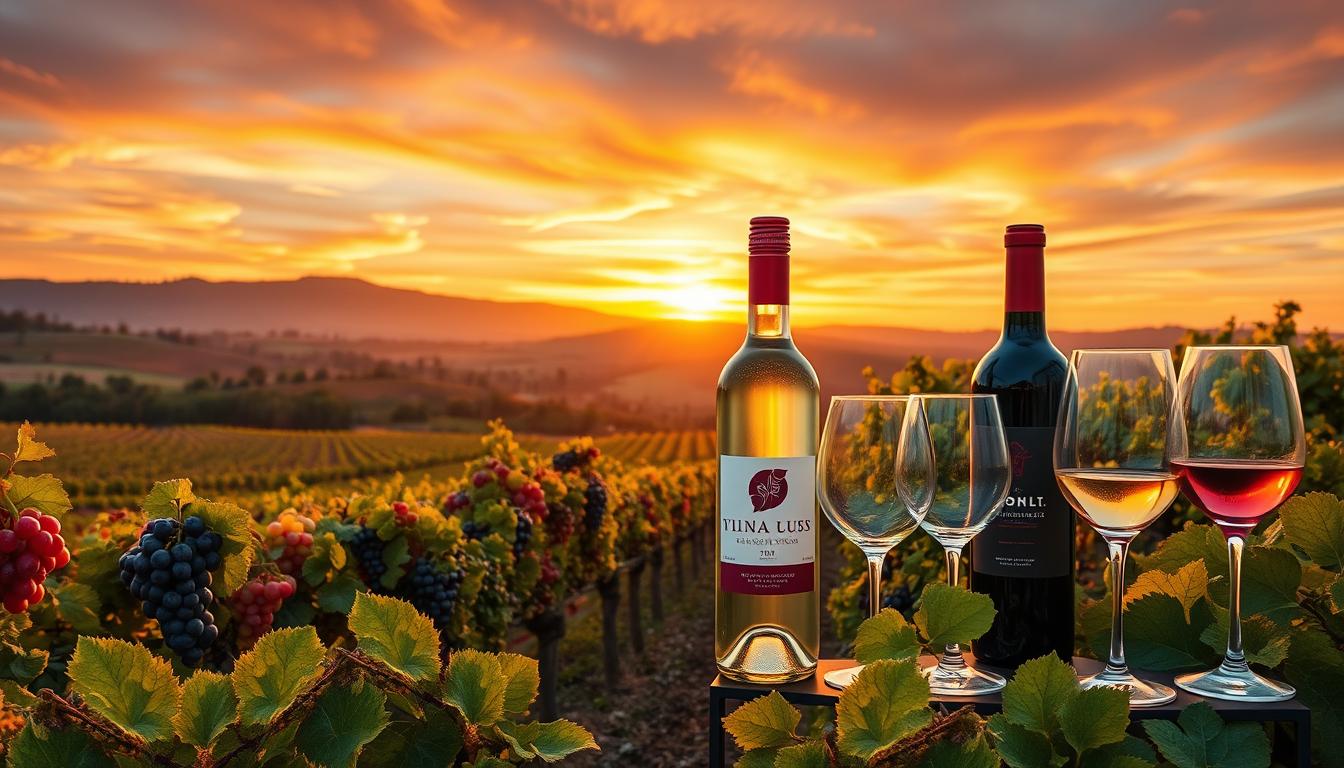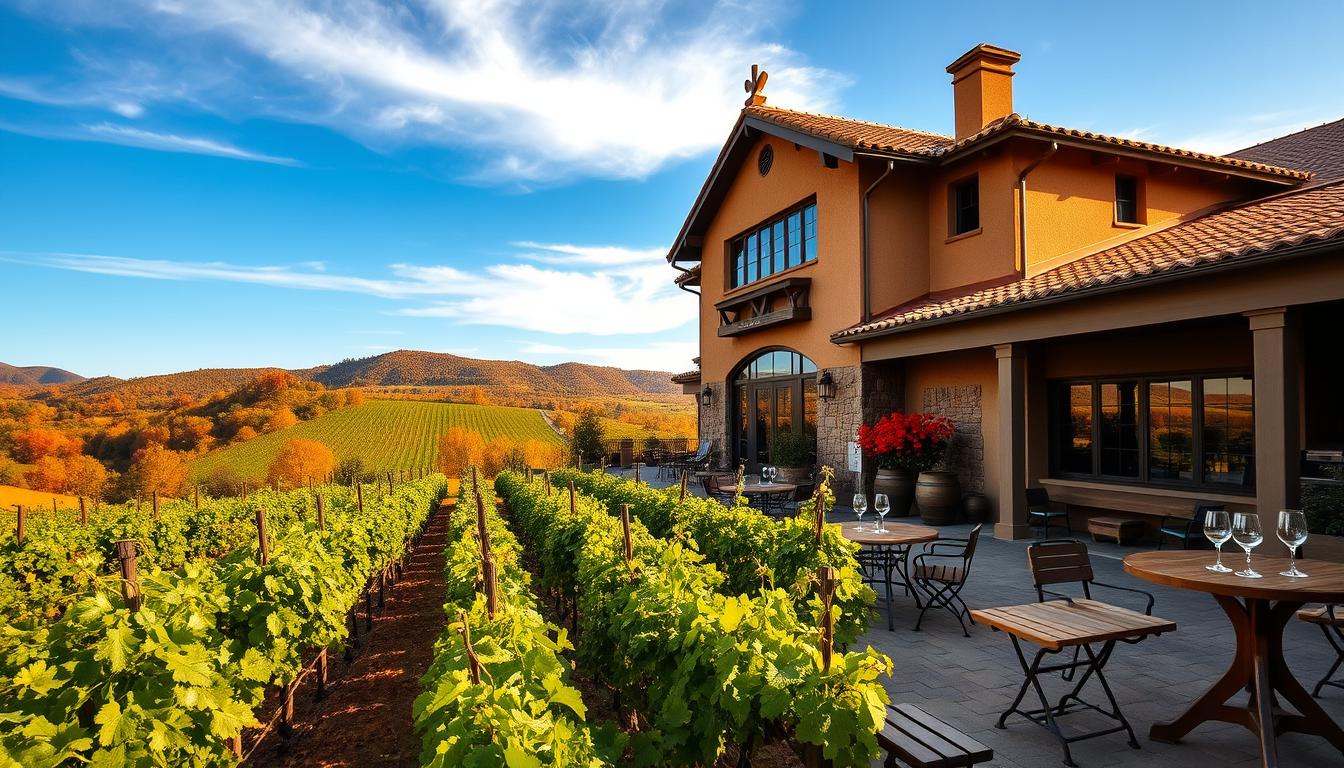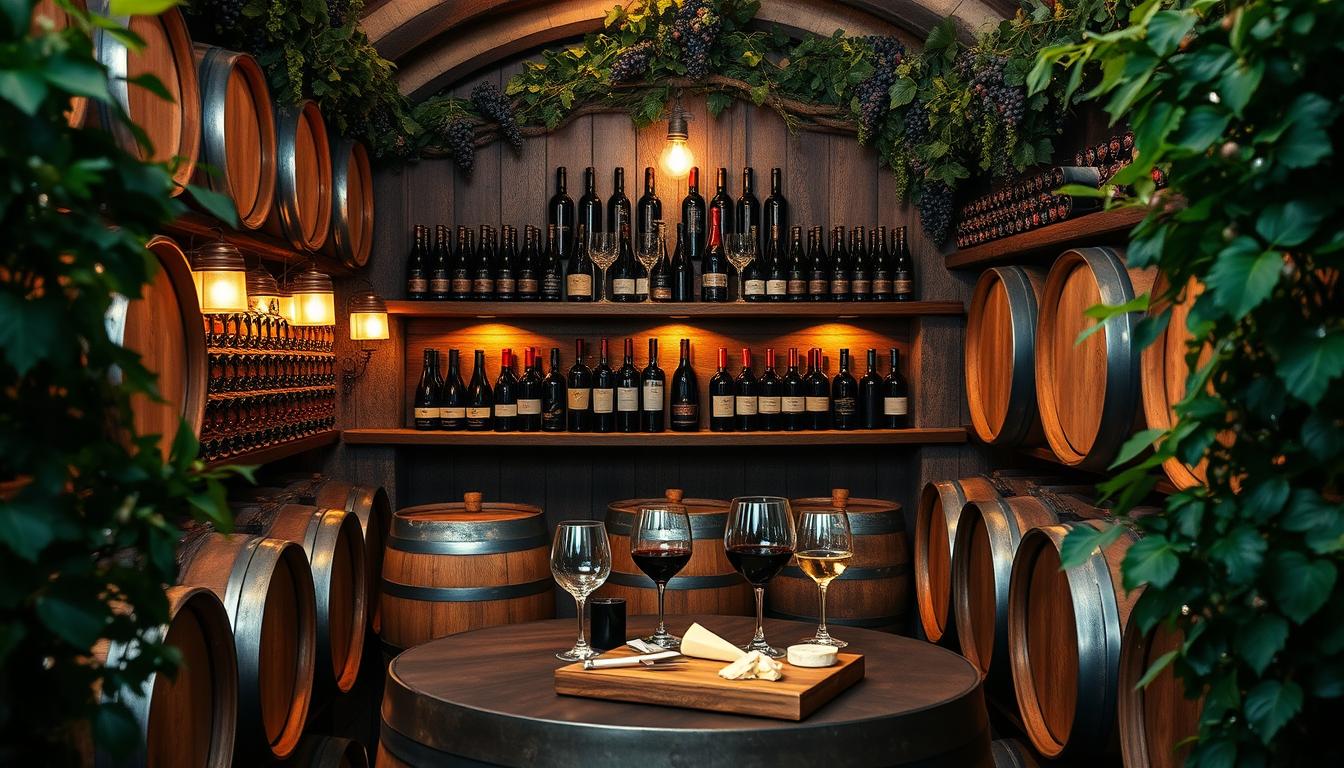Imagine walking into a cozy wine shop, the warm aromas wafting through the air, and the glimmer of bottles lining the shelves catch your eye. The exploration of wine is more than just a beverage choice; it’s an experience that connects us to moments shared with friends, the laughter echoing over dinner tables, and the peaceful solitude of a quiet evening at home. As we navigate the dynamic landscape of the wine industry in 2023, it is essential to understand how the latest wine industry trends shape your preferences and the choices available to you. This year, trends such as premiumisation, sustainability, and emerging wine regions redefine our relationship with wine, ensuring that each sip is not just a taste but a reflection of our evolving values. By embracing these current wine industry statistics and updates, you prepare yourself with insights that keep you ahead in the ever-evolving wine market. In a world where the options for wine are endless, it’s important to savor excellence with top wine picks that align with your personal taste and values. As you immerse yourself in the world of wine, consider exploring the rich diversity of flavors and varietals from emerging wine regions, and supporting sustainable viticulture practices that contribute to a healthier planet. With premiumisation driving the market, indulge in the luxury of finely crafted wines that elevate your wine experience to new heights. Embrace these trends and updates as you navigate the world of wine, and savor excellence with top wine picks that resonate with your individual preferences.
Key Takeaways
- Premium wines are experiencing significant growth, encouraging a trend towards quality over quantity.
- Young adults are increasingly exploring diverse wine categories, opting for less but better.
- The rise of online wine sales presents an opportunity for both consumers and producers.
- Health-conscious trends are driving demand for low and no-alcohol wines.
- New consumer interests focus on sustainable practices and wines aligned with personal values.
The Rise of Premiumisation in Wine Consumption
The landscape of wine consumption is rapidly changing as consumers increasingly gravitate towards premium wines. This trend highlights a significant shift in preferences, with many opting for quality over quantity. Understanding these wine consumption trends reveals critical insights into the current wine industry analysis, particularly among younger demographics eager to invest in exceptional and unique wines.
Understanding Consumer Preferences for Premium Wines
Today’s consumers are placing a premium on experiences that resonate with authenticity and uniqueness. Millennials, representing 44% of regular wine drinkers, are leading this change. They tend to enjoy wine in on-trade settings and are willing to spend more compared to their peers. This demographic showcases a growing interest in premium wines priced between $15 and $49.99, which are projected to witness growth despite an overall market decline. The data suggests that as the U.S. population ages, brands must engage with the adventurous Millennial segment while catering to the evolving tastes of the smaller Gen Z audience.
The Demand for Quality Over Quantity
With projections indicating a -2% volume decline in the U.S. wine market by 2027, low-price tiers face significant challenges. However, the super-premium and ultra-premium wine segments continue to thrive, showcasing a paradigm shift towards “less but better.” Regular wine drinkers have returned to social settings post-Covid but prefer to savor high-quality offerings instead of indulging on casual occasions. This trend underlines a broader movement where consumers prioritize value and craftsmanship over mere volume, aligning perfectly with the current wine industry analysis that emphasizes premiumisation in consumer choices.
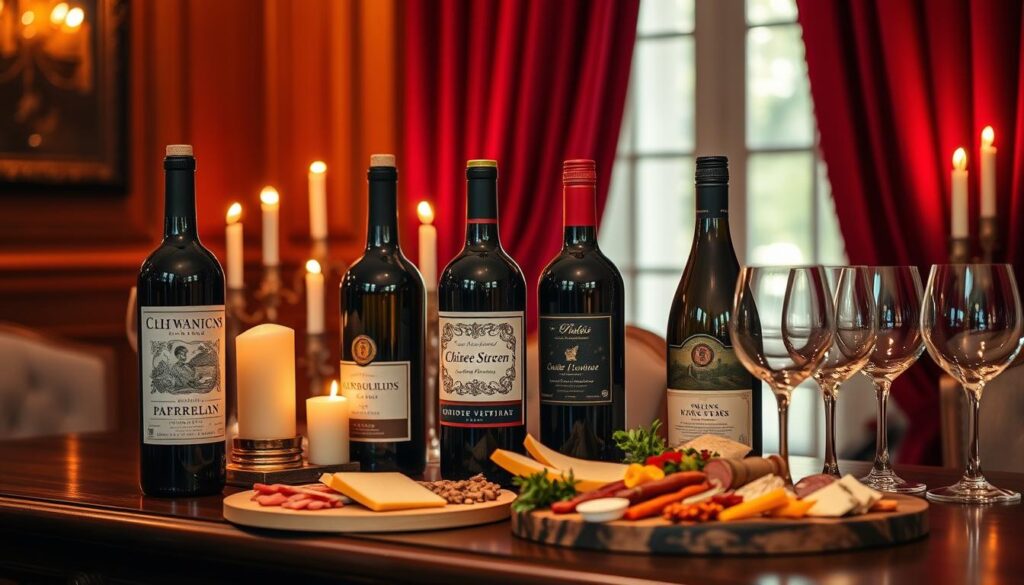
| Wine Segment | Growth Rate | Market Characteristics |
|---|---|---|
| Super-Premium ($13-$19.99) | Significant Growth | High engagement from Millennials |
| Ultra-Premium | Strong Performance | Continues to attract quality-focused consumers |
| Low-Price Tiers | – Strong Decline | Facing challenges against premium segments |
Emerging Regions Gaining Popularity in the Wine Market
The wine industry continues to evolve, presenting exciting opportunities for emerging wine regions around the globe. As traditional wine powerhouses face environmental challenges, the appeal of lesser-known regions grows stronger. Consumers increasingly seek diversity beyond familiar classics like Bordeaux and Napa Valley. Understanding these shifts will help you connect with unique offerings that enrich your wine experience.
Exploring Lesser-Known Wine Regions
Regions such as Virginia, Finger Lakes, and various Rhône subregions are gaining attention for their distinctive terroir and innovative approaches. These emerging wine regions are not only producing exceptional wines but also challenging the established norms of the global wine market. The exploration of these areas invites wine enthusiasts to broaden their horizons and embrace the nuances they offer.
Global Shifts in Vineyard Locations
Several factors are driving shifts in vineyard locations as wine production trends evolve to meet the demands of the market. Climate change is altering growing conditions, leading winemakers to adapt and sometimes relocate their vineyards to more suitable areas. This evolving landscape opens doors to new experiences and varietals, enhancing your ability to find wines that resonate with your personal taste.
| Region | Characteristics | Notable Varietals | Market Potential |
|---|---|---|---|
| Virginia | Warm climate, diverse soils | Viognier, Cabernet Franc | High growth potential |
| Finger Lakes | Cool climate, stunning lakes | Riesling, Cabernet Sauvignon | Increasing popularity |
| Rhône Subregions | Varied microclimates | Grenache, Syrah | Steady interest |

These shifts exemplify how the global wine market is becoming increasingly dynamic, allowing new players to thrive while traditional regions adapt. Embracing this diversity can elevate your wine journey, empowering you to explore and support innovative producers shaping the wine industry’s future.
Innovations in Wine Production for Sustainability
The wine industry is undergoing significant changes as producers embrace innovative methods aimed at ensuring sustainability. This shift is largely driven by consumer demand for environmentally responsible practices. As you explore the dynamics of the contemporary wine landscape, the concepts of values-based winemaking and regenerative viticulture stand out as pivotal to the future of sustainable wine production.
Values-Based Winemaking Practices
Values-based winemaking emphasizes transparency and ethics within the industry. Consumers are increasingly curious about how grapes are cultivated and the treatment of vineyard workers. This trend fosters a sense of connection between wine producers and consumers, allowing for an appreciation of the effort behind each bottle. As a result, many wineries are adopting ethical sourcing practices and implementing social responsibility initiatives. Some of these changes include:
- Ensuring fair wages and working conditions for vineyard workers.
- Adopting sustainable farming methods to minimize environmental impact.
- Utilizing certifications such as SIP Certification and Napa Green to validate their sustainable practices.
Regenerative Viticulture and Its Impact
Regenerative viticulture has emerged as a groundbreaking approach within sustainable wine production. This method focuses on enhancing soil health and biodiversity, striving for a balanced ecosystem that supports vineyard longevity. Notable wineries, such as Hope Well Wine in Oregon and Maison Mirabeau in France, are leading the charge in implementing these practices. The Regenerative Viticulture Foundation, backed by influential industry leaders, aims to set new standards for global sustainability in viticulture.
The emphasis on regenerative practices illustrates a holistic approach to winemaking that prioritizes environmental stewardship. As this trend shapes the industry, consumers value the commitment to sustainability shown by vineyards embracing these techniques.
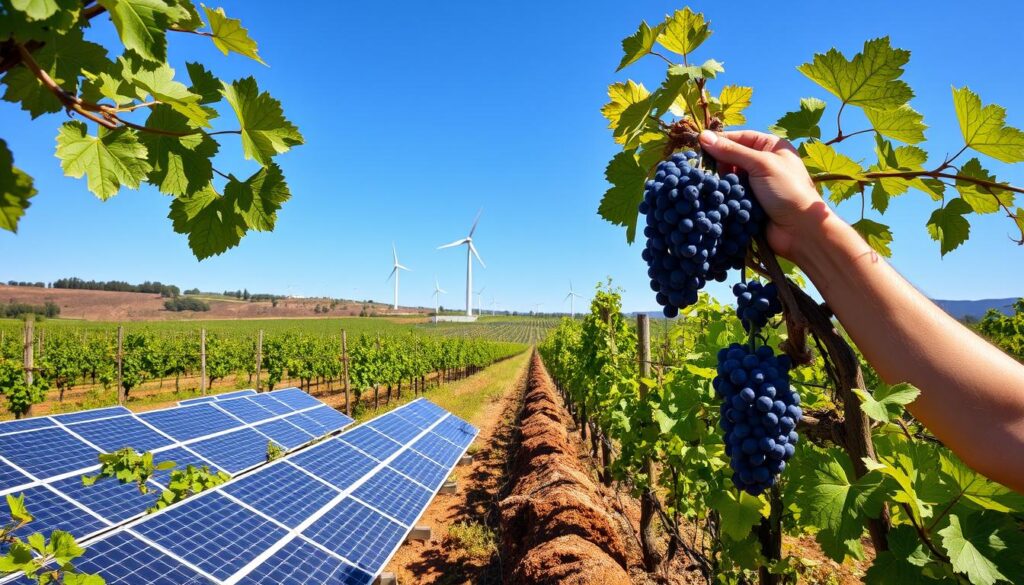
Wine Industry Trends to Watch
The landscape of wine consumption is continuously evolving, influenced significantly by changing consumer behaviors following the pandemic. Younger generations, including Millennials and Gen Z, are reshaping the wine market with their distinct preferences and values. Understanding these trends can help both consumers and producers adapt accordingly.
Changing Consumer Behaviors Post-Pandemic
As you explore the latest wine trends, it becomes clear that post-pandemic shifts are steering consumer choices towards moderation and quality. A growing 20% increase in mindful drinking habits highlights a desire for intentional consumption that emphasizes personal health and environmental sustainability. You may notice the rising popularity of premium wines and low-alcohol options, which cater directly to these changing consumer behaviors.
The Influence of Younger Generations on Wine Choices
Younger generations are not just passive consumers; they actively seek experiences that align with their values. This demographic demonstrates a 40% increase in supporting smaller wine producers, drawn to their unique stories and quality over mass-market offerings. The emphasis on native and indigenous grape varieties has surged by 70%, illustrating a quest for novelty in flavor profiles. With a willingness to experiment with co-fermentation techniques, these wine enthusiasts appreciate diverse and experimental wine varieties that reflect their evolving tastes.
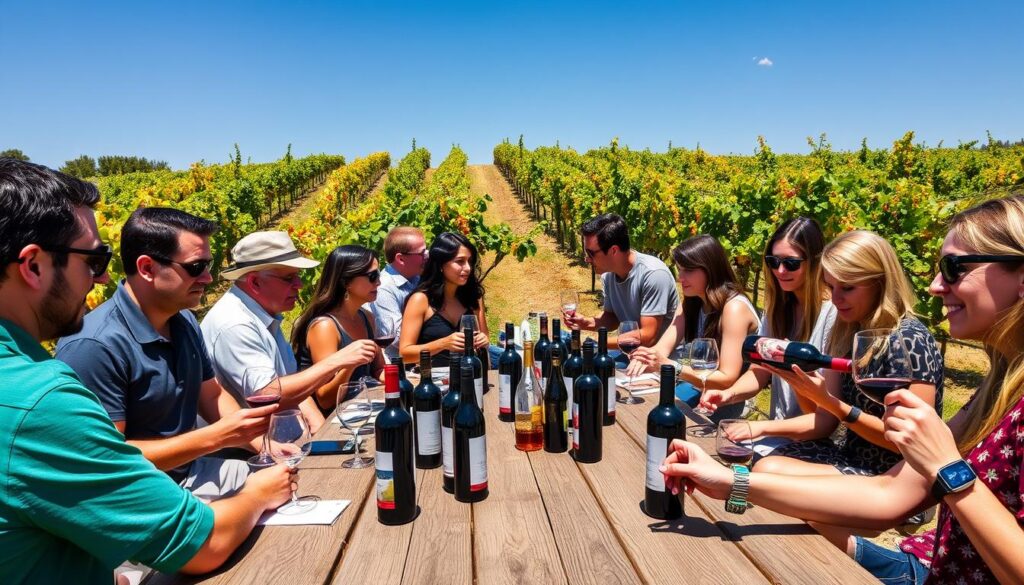
The Surge of E-commerce in the Wine Industry
The wine industry has experienced a remarkable transformation with the rise of e-commerce wine sales. This shift has shaped online purchasing trends significantly, making it easier for consumers to discover and purchase their favorite wines from the comfort of home. As more wineries adopt digital strategies, the opportunities within the market continue to expand.
Online Wine Sales Trends
In recent years, e-commerce has emerged as a critical channel for wine sales. The revenue expected to reach USD 4.83 billion in 2025 reflects a 5% increase from the previous year. An annual growth rate (CAGR) of 4.12% is projected from 2025 to 2029, potentially reaching a market volume of USD 5.91 billion by the end of the decade. This growth correlates with the rising number of users engaging in wine e-commerce, with an estimated 266.7 million users by 2029. The average revenue per user (ARPU) forecasted at USD 25.38 indicates a robust market potential.
How Consumers are Embracing Online Purchases
Consumers increasingly appreciate the convenience of online wine purchasing, allowing them to explore a wider variety of options without geographical limitations. Although there was a decline in Direct-to-Consumer (DTC) shipping in 2022, it did not diminish interest in purchasing wine online. Innovations in online marketing, virtual tastings, and AI-powered recommendations enhance the user experience, fostering a community that appreciates the stories behind each bottle.
The majority of sales come from the top 20% of wineries that have established engaging online platforms. Small wineries can leverage partnerships with compliance and e-commerce companies to expand their reach and improve sales volume. Despite logistical challenges such as compliance with laws and age verification, wineries focusing on user-friendly interfaces and efficient inventory management can thrive in this burgeoning market.
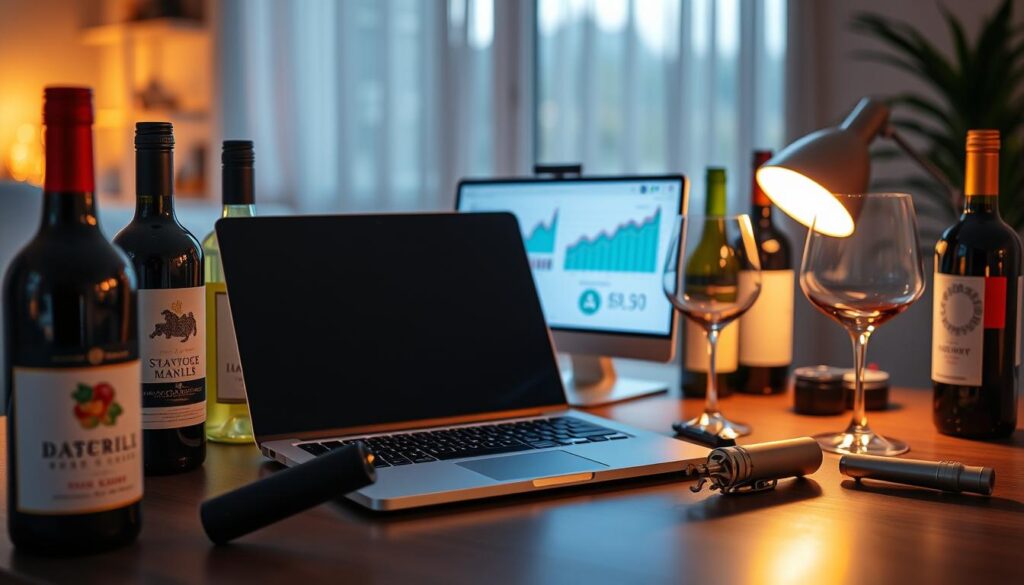
| Year | Market Revenue (USD) | User Engagement (millions) | Projected ARPU (USD) |
|---|---|---|---|
| 2025 | 4.83 billion | 266.7 | 25.38 |
| 2029 | 5.91 billion | 266.7 (forecasted) | 25.38 (forecasted) |
The enduring appeal of e-commerce wine sales coupled with increased accessibility places you in a position to enjoy not only better selections but also enhanced experiences tailored to your preferences.
Sparkling Wine’s Continued Popularity
The sparkling wine industry has flourished, showcasing impressive growth and evolving consumer preferences. The surge in informal consumption of sparkling wine highlights a shift in how people perceive and enjoy these bubbly beverages. With occasions for celebration becoming more casual, sparkling wines like Prosecco and Champagne are increasingly chosen for everyday moments.
The Evolving Perception of Sparkling Wines
As consumer preferences shift, sparkling wines are now viewed as suitable for a variety of occasions, blurring the lines between formal and casual drinking scenarios. The sparkling wine industry was estimated at $36.7 billion in 2022, with significant double-digit growth in consumption from 2020 to 2021. This trend indicates that sparkling wine has become a staple in many households, with almost 72% of consumers enjoying it at least monthly as of 2022, an increase from 56% in 2019. The U.S. market, in particular, is projected to account for nearly 15% of global sparkling wine sales by 2026, underscoring its rising prominence.
Informal Celebrations Driving Sparkling Wine Sales
The informal consumption of sparkling wine has revolutionized how Americans celebrate life’s moments. Statistics reveal that around 30% more Americans drank sparkling wine between 2019 and 2022. Regular consumption has shifted, with nearly two in five consumers indulging in sparkling wine weekly. This encourages producers to create accessible options that resonate with new demographics, thus propelling growth further.

| Year | Estimated Industry Value ($ billion) | % of U.S. Population Drinking Sparkling Wine |
|---|---|---|
| 2019 | – | 56% |
| 2021 | – | – |
| 2022 | 36.7 | 72% |
| 2026 (Projected) | – | 15% of Global Sales |
The sparkling wine category has become more than just a celebratory drink; it represents a lifestyle that embraces informal gatherings. As the industry expands, a focus on quality and diverse offerings is likely to keep fulfilling consumer preferences in innovative ways.
The Emergence of Alternative Wine Options
In recent years, the landscape of the wine industry has shifted dramatically with the rise of alternative wines. This movement is not just a fleeting trend but rather a reflection of changing consumer preferences. Today’s wine enthusiasts are increasingly drawn to organic wines that promise lower intervention and enhanced sustainability. As health and ethically conscious consumers continue to dominate the market, the demand for unique flavors and environmentally friendly options is on the rise.
Interest in Organic and Natural Wines
The fascination with organic wines has seen remarkable growth, particularly in markets like Germany, France, and the UK, where nearly 60% of consumption occurs. Germany and Sweden have established themselves as leading markets for organic wines, while Australia and South Korea are catching up rapidly. Millennials, representing a significant demographic push, often associate organic wines with high quality. In the U.S., around 30% of Gen Z and Millennial regular wine drinkers share this perception, compared to only 12% of Baby Boomers.
Hybrids and Indigenous Grapes Gaining Traction
Hybrid grape trends are also making headlines as winemakers adapt to climate challenges. Cool climate regions such as England and parts of Canada are emerging as notable viticultural zones capable of producing exceptional wines. These hybrids and indigenous varieties not only bring resilience but also expand the palette of flavors available to consumers. As a result, many wine lovers are eager to explore the diverse offerings that these grapes provide, fueling the demand for alternative wines as part of a broader trend towards sustainable and innovative wine practices.
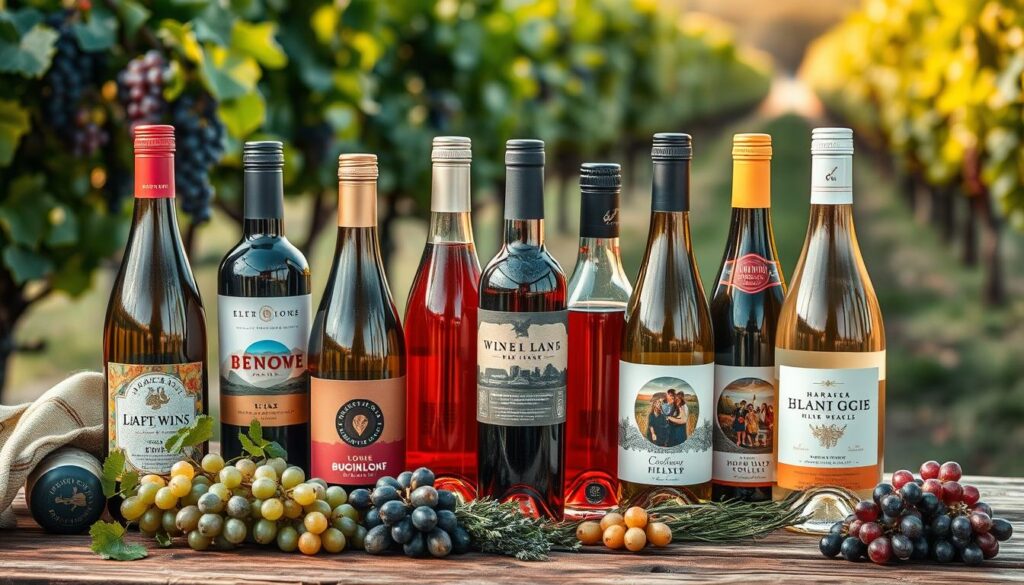
| Region | Established Markets | Emerging Markets |
|---|---|---|
| Germany | High awareness and consumption of organic wines | Australia – Significant growth |
| France | Leading in organic wine production | South Korea – Rapidly growing interest |
| UK | Strong market for organic wines | England – Notable emerging wine region |
| USA | 30% of younger consumers interested in organic | Indigenous grape exploration gaining attention |
As these trends continue to unfold, alternative wines represent more than just a shift in production; they embody a broader movement towards sustainability and innovation in the wine industry. With consumers eager for new experiences and eco-conscious choices, the future of wine looks promising.
Low and No-Alcohol Wine Trends
The shift towards health-conscious consumption is reshaping the wine industry, giving rise to the popularity of low and no-alcohol (NOLO) wines. As you explore this evolving landscape, you’ll notice a significant trend among younger generations who are consciously moderating their alcohol intake. This new wave of health-conscious consumers is fueling a surge in demand for alternatives that complement their lifestyle, leading to an impressive growth of low-alcohol wines by +8% and no-alcohol wines by +7% in 2023, particularly in the U.S.
Health Consciousness Among Wine Drinkers
The increasing awareness of health and wellness translates directly to the choices you make in wine selections. This growing group of consumers values sustainability and quality, favoring selections that not only support their health goals but also align with their ethical beliefs. Retailers and restaurants are adapting to this change, offering curated selections of NOLO wines that meet diverse consumer preferences, ensuring a space for those who desire great taste without the intoxicating effects.
Market Growth for NOLO Wines
The market for NOLO wines continues to flourish, with the non-alcoholic wine sector alone estimated at $2.26 billion and anticipated to grow at a robust 7.9% CAGR through 2030. This trend reflects a broader appetite for drinking options that don’t compromise on flavor or the overall experience of enjoying wine. As the industry adapts, brands like Eins Zwei Zero, Ariel, and FRE are stepping up, making their mark amidst increasing scrutiny over taste and quality.
